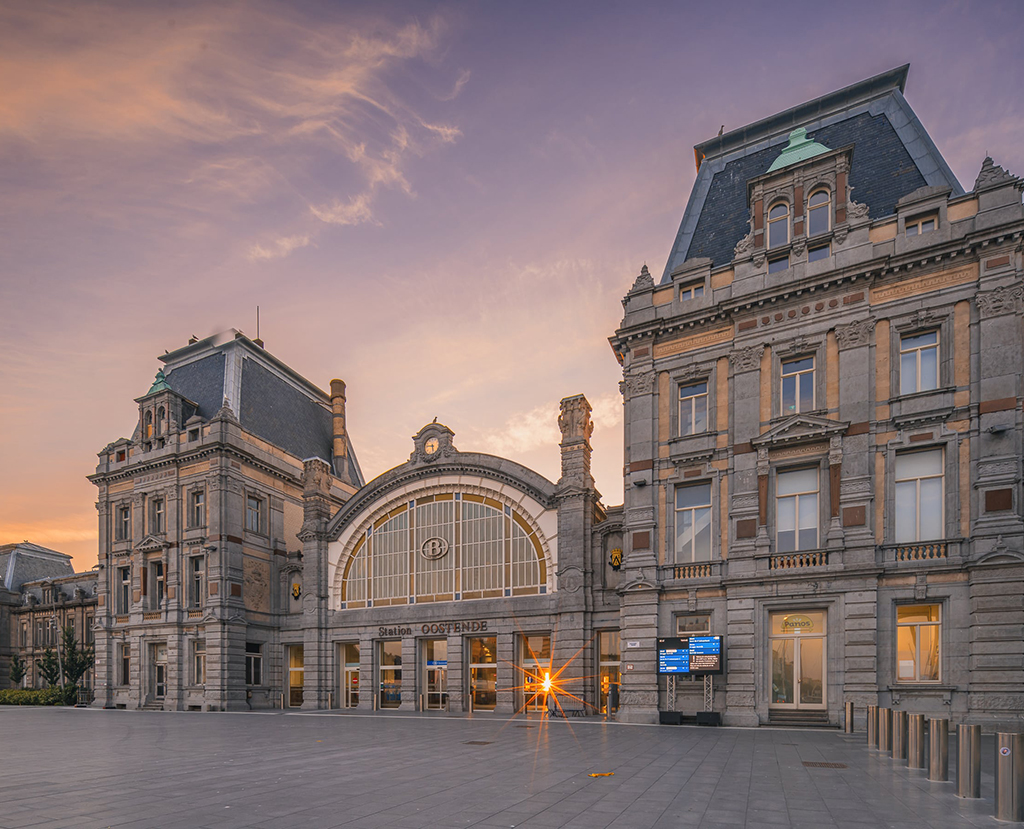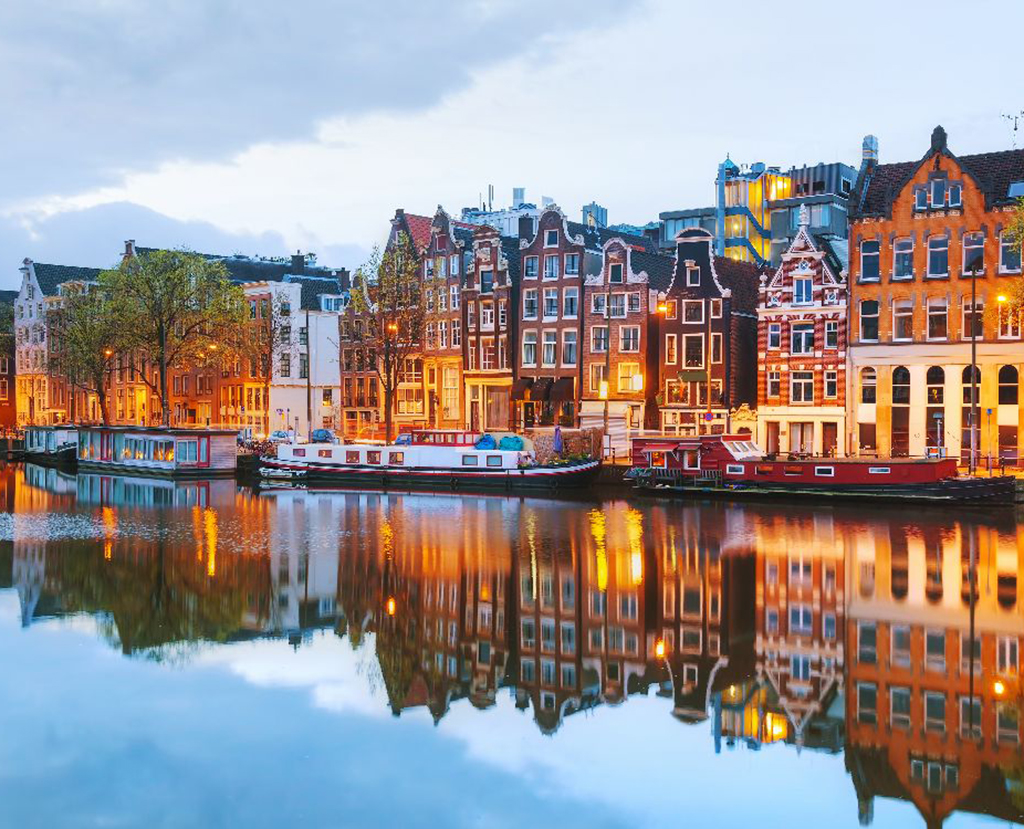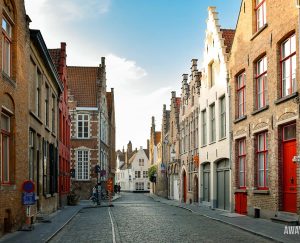When strolling through Bruges, marveling at its serene canals, historic belfry, and charming squares, you may wonder: what lies beyond this fairy-tale city? I find that Bruges’ surrounding areas are brimming with small towns and natural wonders waiting to be explored. These hidden treasures quietly await curious travelers seeking unique experiences.
I’ll take you on a journey to explore some must-visit spots near Bruges. Whether you’re a history enthusiast, nature lover, or someone yearning to experience authentic Belgian life, you’ll find an itinerary tailored to your interests.
Ostend: Belgium’s Coastal Gem
If you’re yearning for a seaside escape, Ostend, located just a 20-minute train ride from Bruges, offers a refreshing change of scenery. Known for its long sandy beaches, art museums, and fresh seafood, Ostend presents a peaceful coastal atmosphere that contrasts beautifully with the inland charm of Bruges. Visiting in February provides a unique opportunity to experience the town in its quiet winter state, with fewer crowds and a tranquil seaside ambiance.
Highlights of Ostend in February:
Ostend Beach: A Winter Seaside Escape
Ostend’s beach, while more popular in the summer, is particularly serene during February. Although it’s too cold for swimming, this is the perfect time to take a long, contemplative stroll along the wide stretch of sandy shore. The winter wind adds a refreshing bite to the air, and the sound of the waves crashing against the shore creates a soothing soundtrack. With fewer visitors, you’ll have the beach almost to yourself, offering a peaceful and intimate experience. The winter light also makes for beautiful photography, with soft, muted tones casting over the beach and the distant horizon.
If you’re up for a cozy break, head to one of the beachside cafés where you can warm up with a hot drink, watching the waves from the window. Many local cafés offer delicious hot chocolates, mulled wine, and freshly baked pastries that are perfect for a cold winter’s day.
James Ensor House: A Cultural Immersion
Ostend is home to the famous Belgian Symbolist painter James Ensor, and his former residence, now the James Ensor House, is a must-see for art lovers. Ensor, known for his surreal and sometimes haunting artwork, lived in this house for most of his life. The museum provides a fascinating glimpse into the life and works of this influential artist.
During February, the museum is less crowded, allowing you to fully immerse yourself in the artwork and the intimate space that shaped Ensor’s creative vision. The house itself is preserved with original furniture and displays, creating a rich atmosphere where you can explore the influences and personal history that informed Ensor’s artistic journey. You’ll also find a well-curated collection of his most famous paintings, including his iconic “The Entry of Christ into Brussels,” alongside lesser-known pieces that shed light on the diversity of his work.
The museum also often features temporary exhibits showcasing contemporary art that aligns with Ensor’s legacy. It’s an ideal place for anyone who appreciates Belgian art or is curious about the Symbolist movement.
Harbor District’s Seafood Feasts: Fresh Flavors by the Sea
Ostend is renowned for its fresh seafood, and the harbor district is the best place to enjoy a feast of the freshest fish, mussels, and shrimp, caught right from the North Sea. In February, the chilly air only makes the experience more enjoyable as you tuck into a warm seafood dish.
One of the most popular dishes in Ostend is moules-frites (mussels with fries). The mussels are fresh, tender, and perfectly paired with crispy fries. You’ll find many restaurants in the harbor offering this classic dish, along with a variety of other seafood options like shrimp croquettes and fish stew. Pair your meal with a crisp white wine or a glass of Belgian beer to enhance the flavors.
The harbor district itself is picturesque, with colorful fishing boats bobbing in the water and charming seafood stalls lining the streets. Even in February, the area has a cozy charm, with many waterfront restaurants featuring indoor seating with great views of the harbor. This is an experience not to be missed when visiting Ostend in the winter months, as the seafood is at its freshest, and the atmosphere is more relaxed.

Travel Tips for Visiting Ostend in February:
- Weather: February can be cold and windy by the sea, so be sure to dress warmly and wear layers. A good jacket, scarf, and gloves are essential for exploring the beach and harbor areas.
- Public Transport: Ostend is easily accessible by train from Bruges. The journey takes just 20 minutes, and trains run frequently. Once you arrive, you can explore the town on foot or by local bus.
- Off-Season Advantage: Since February is a quieter month in Ostend, you’ll experience less tourist traffic, meaning more opportunities to enjoy the attractions at your own pace. However, do check the opening hours for attractions like the James Ensor House, as some may operate on shorter schedules in the off-season.
Ostend in February is perfect for a peaceful seaside getaway, offering the perfect blend of nature, art, and culinary delights. Whether you’re walking along the quiet beach, delving into the world of James Ensor, or indulging in fresh seafood by the harbor, this charming coastal city provides an unforgettable experience, even in the colder months.
Travel Tips:
- Ostend is ideal for a day trip but also offers plenty of cozy accommodations for an overnight stay.
Ypres: A Town Steeped in History
History buffs and those with an interest in World War I should not miss Ypres. Located about an hour’s drive from Bruges, this town bears witness to the harrowing events of the Great War.
Highlights:
- Menin Gate Memorial: Attend the poignant Last Post ceremony held every evening at 8 PM to honor the fallen soldiers of World War I.
- In Flanders Fields Museum: This interactive museum vividly brings the history of the war to life through artifacts and personal stories.
- St. Martin’s Cathedral: This Gothic cathedral adds a serene yet solemn touch to Ypres’ skyline.
Travel Tips:
- Guided tours are highly recommended to delve deeper into Ypres’ historical significance.
- Nearby trench sites offer a powerful glimpse into the realities of wartime life.

Terneuzen: A Taste of Dutch Serenity
Situated an hour’s drive from Bruges, Terneuzen offers a peaceful escape with a touch of Dutch charm. This town at the Belgium-Netherlands border is perfect for travelers seeking tranquility and authenticity.
Highlights:
- Scheldt River: Stroll along the riverbank and enjoy the serene landscape.
- Local Markets: Explore quaint craft shops and farmers’ markets for unique souvenirs and local delicacies.
- Travel Tips:
- Self-driving is the best way to reach Terneuzen, and the journey offers picturesque countryside views.
- Don’t miss Dutch treats like stroopwafels (caramel waffles) for a sweet indulgence.
Exploring Beyond Bruges
Bruges is more than just a city for tranquil strolls and canal cruises—it’s also a gateway to an array of fascinating destinations. Whether it’s the literary charm of Damme, the vibrant energy of Ghent, the coastal allure of Ostend, the historical depth of Ypres, or the serene beauty of Terneuzen, these day trips add depth and variety to your Belgian adventure.
The next time you visit Bruges, carve out a few extra days to venture beyond its medieval walls. These surrounding gems promise to make your journey more diverse, memorable, and uniquely yours.


